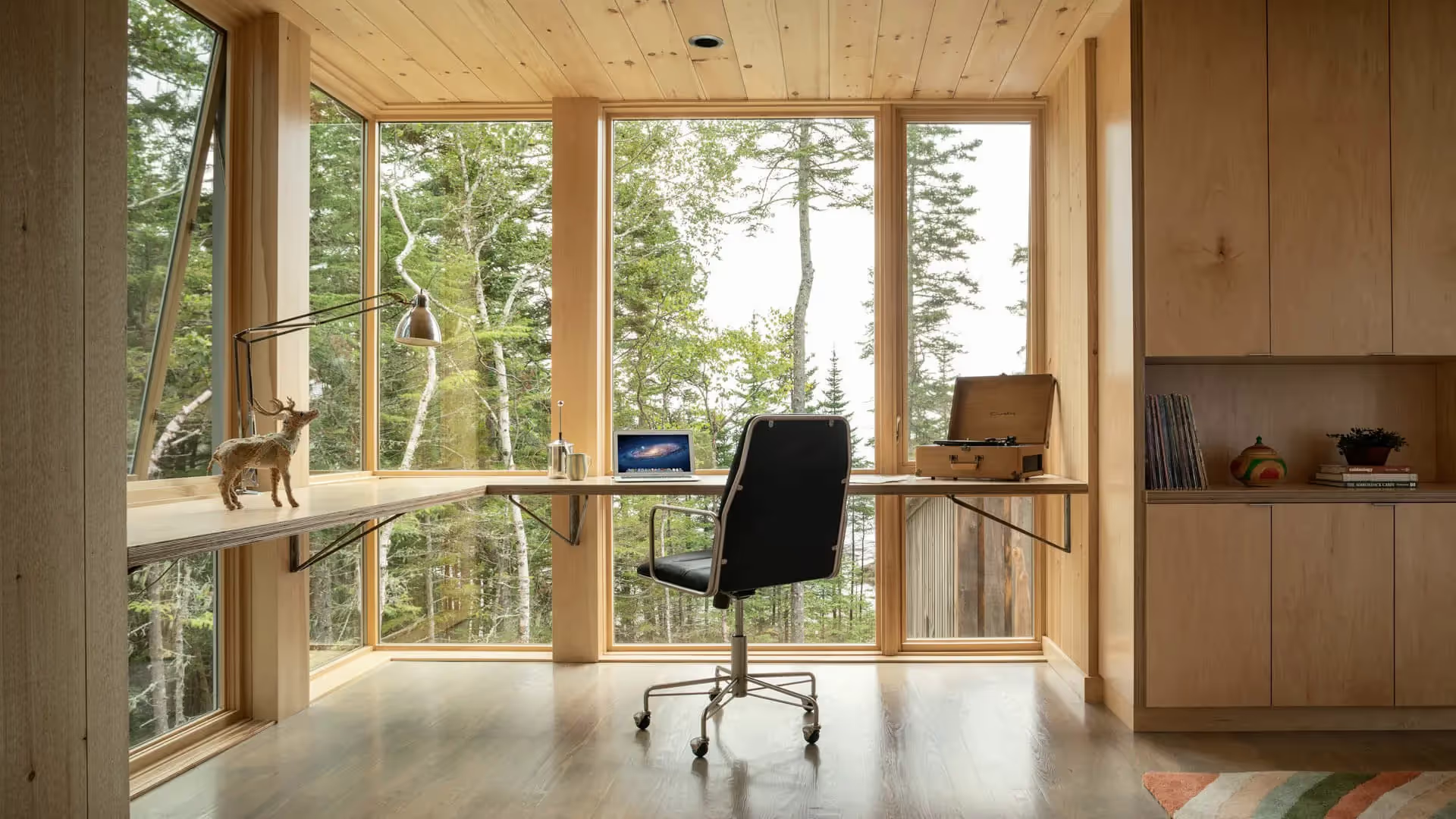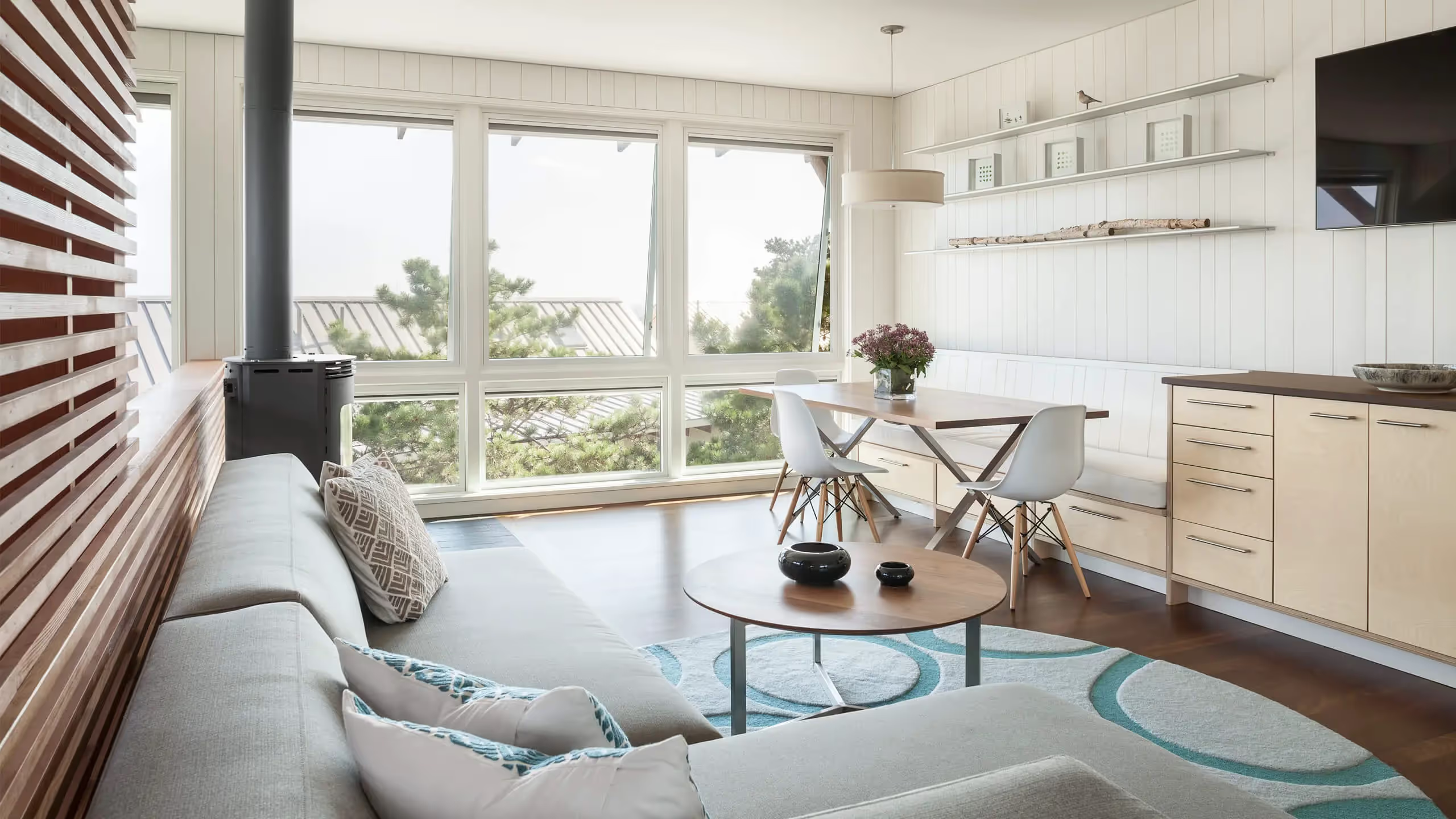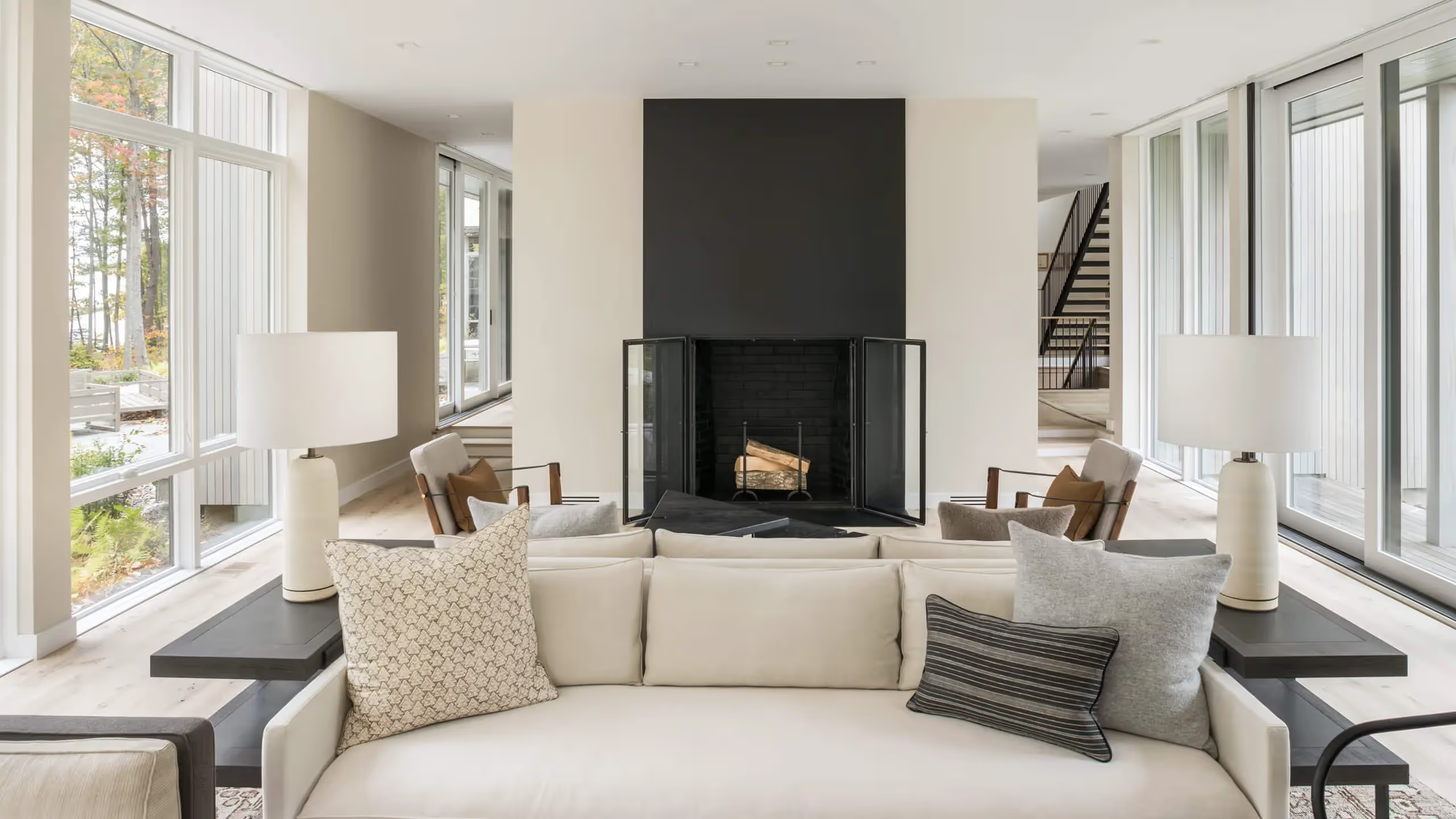Redefining Home During COVID-19


We've been in the midst of a pandemic for several months now, adjusting to life (mostly) at home. As a result of COVID-19, many Americans have found themselves working from home with their children learning from home. Overnight, spaces that were designed for evenings, nights, and weekends have been asked to support full-time working and learning. Many spaces that were adequate for the occasional hour of work—nooks, desks, kitchen counters—don't support the demands of a full-time job, nor do they support multiple full-time workers and students in the same home. The rise in video conference calls has led to a new set of acoustic considerations as well as a desperation for, quite simply, doors. Without physical distance between work and home, we must find ways to create distance. What has been particularly challenging for many is creating this distance for multiple family members within one home.
As architects, we've seen a growing desire for duality in the function of spaces and more flexibility within open-plan living. We've had to take new ideas into consideration, like How can we make full use of every space in a house? Which rooms can do double duty? A new design challenge we anticipate tackling is how to maintain an open feel and visual continuity in primary living spaces, while providing separate zones with acoustic autonomy. One solution we employ is dividing space with pocket doors, which disappear when not in use. Another option is glass partitions, which allow for light to permeate the space while creating acoustical barriers. Instead of choosing between an open plan and a more traditional layout, we strive to incorporate the best aspects of both.
If this time has taught us anything, it is that traditional work spaces are not obsolete. We are finding for our team at Whitten Architects (as well as hearing from our clients) that having a separation between a workstation and the home helps maintain productivity.
We always strive to design for healthy living environments, and natural light and ventilation are more important than ever to successfully working anywhere, but particularly in the home. With our kitchen and laundry machines often a few steps away, we find even more reason to open the windows and generate cross ventilation. Strategically placing windows at opposite ends of the home on axis with one another allows for a constant air exchange. Lighting for the workplace is often overlooked because computers are illuminated themselves, but working in a well-lit space, whether it be natural light during the day or effective electrical light at night, remains important to comfort and productivity.
Since many of us are home with children, we've had to consider how design can be inclusive of all ages, while also creating separate spaces. Both academic and professional work migrated online during the pandemic, meaning children and adults alike are now constantly connected in tight quarters. Everyone is experiencing screen fatigue. We are finding it more important than ever to get outside, and to bring the outside in whenever possible. For a long time there was growing interest in having the latest technology in the home. Today we are seeing a greater selectivity with electronics, and a growing interest in homes that allow us to disconnect. Going forward, we may reconsider which rooms in the home should have screens and pay more attention to consciously disconnecting.







